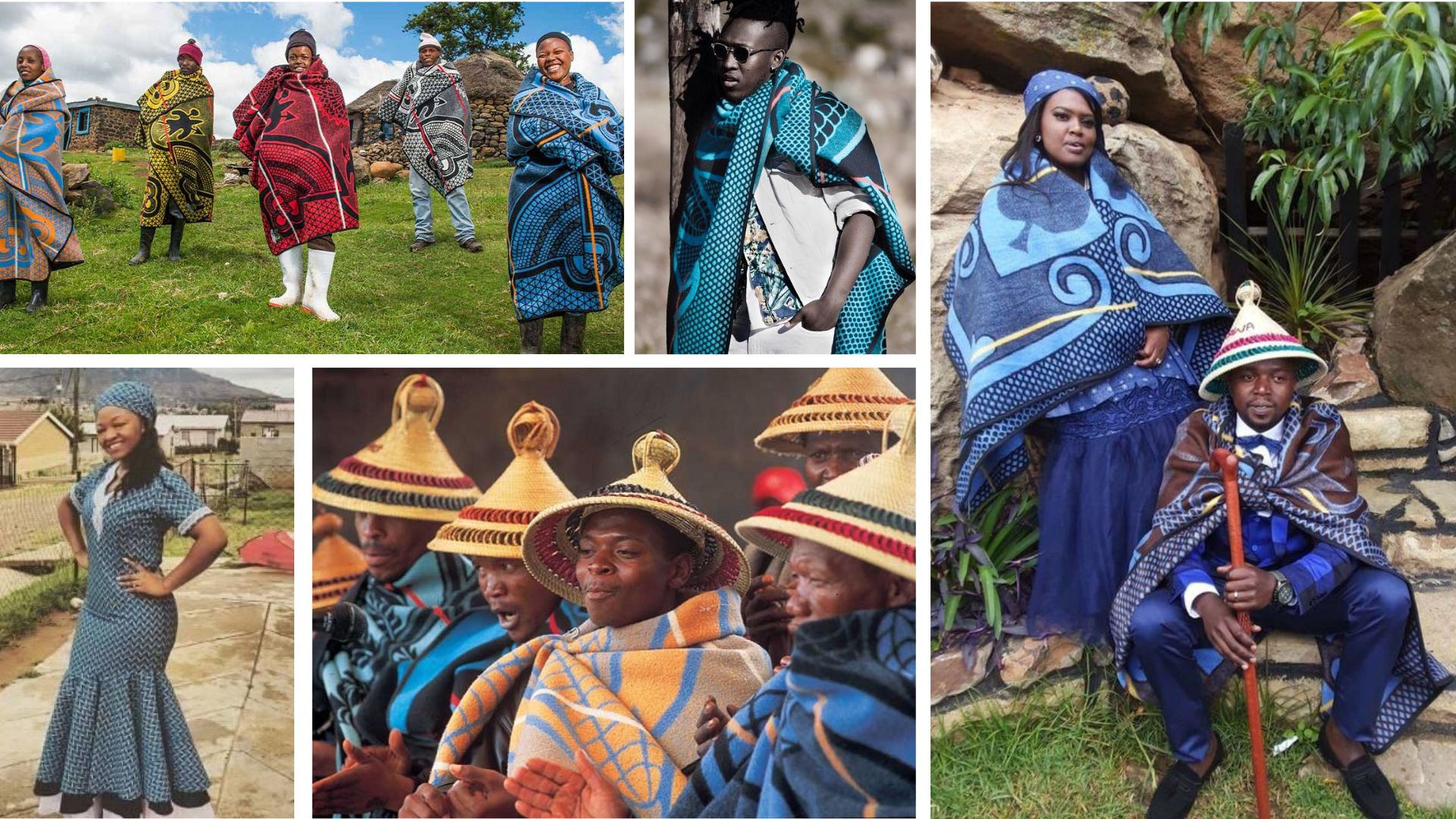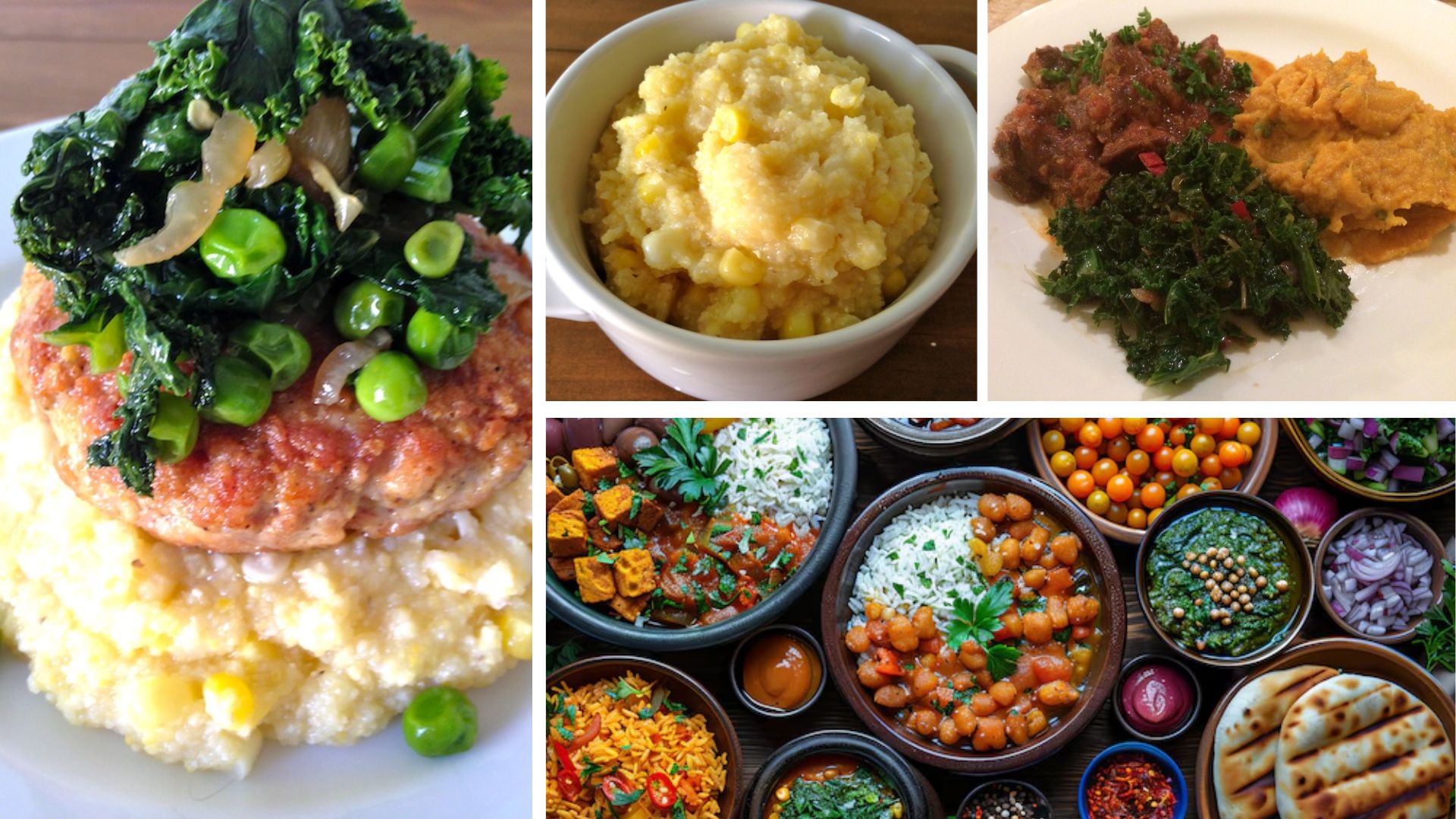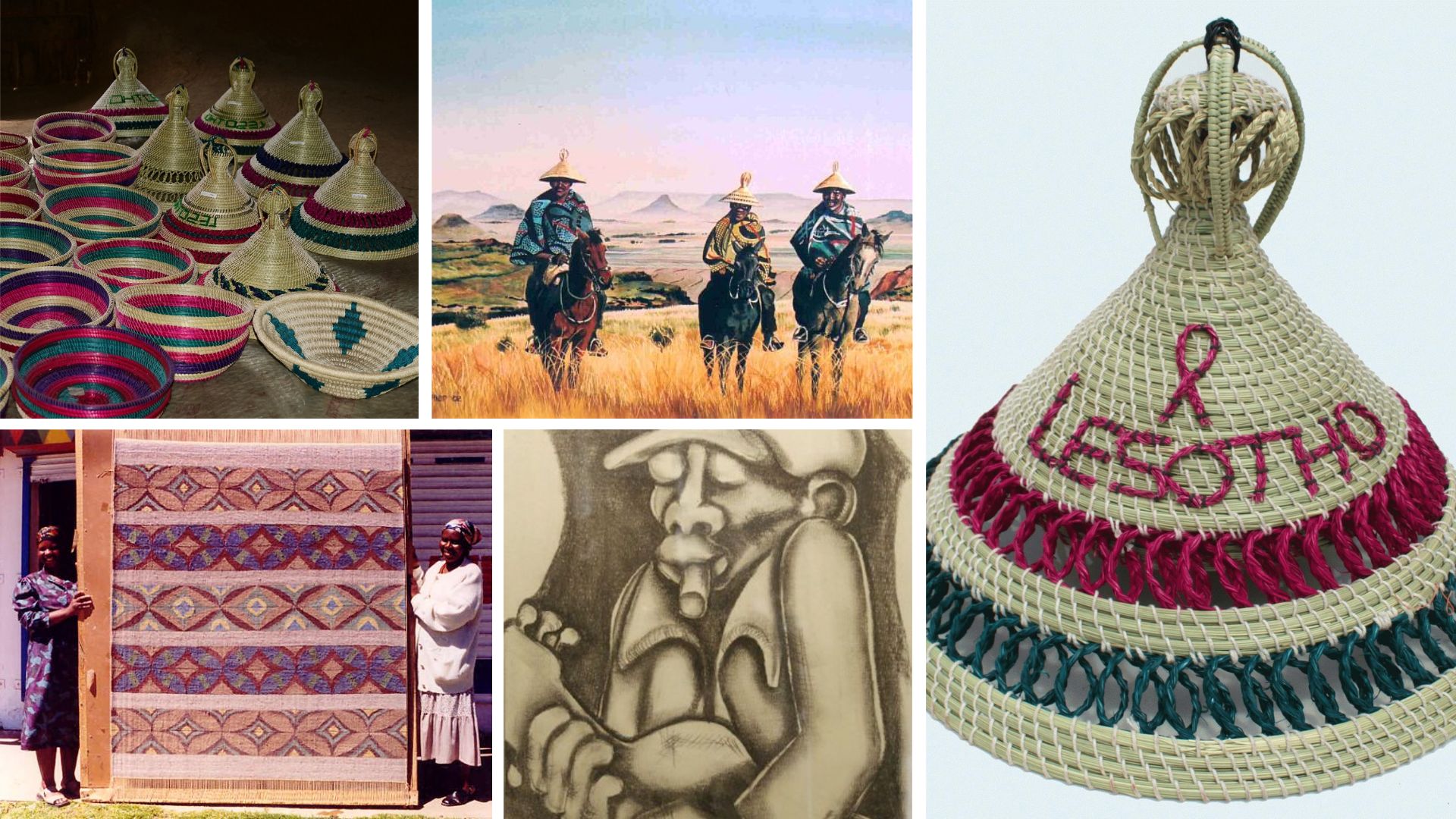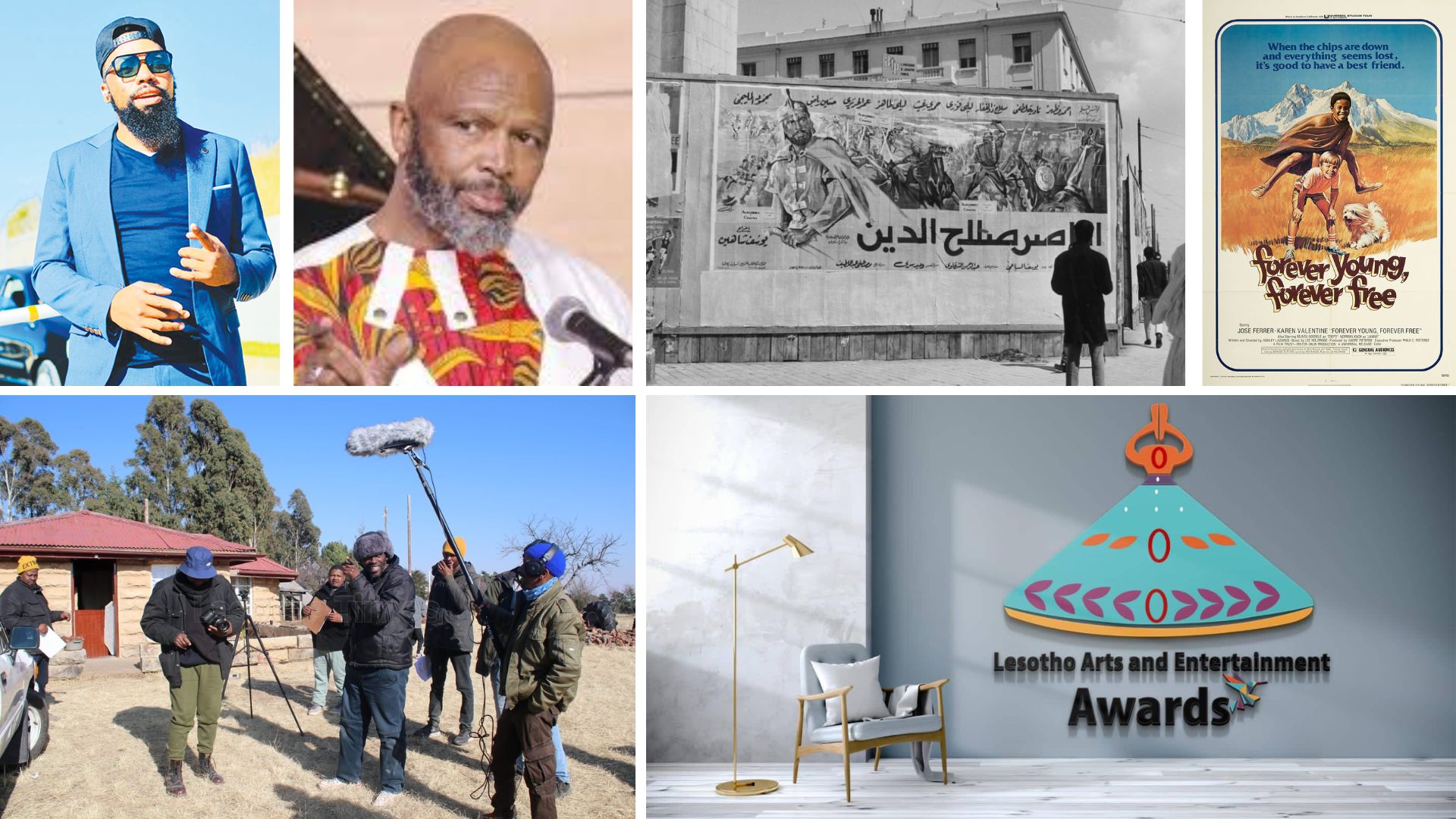Lesotho's
culture is rich, diverse, and deeply rooted in its history, traditions, and heritage.
Here are some key aspects of Lesotho's culture:
 Traditional Clothing and Attire:
Traditional Basotho attire is an integral part of
Lesotho's culture and identity. The Basotho blanket, known as the "Seanamarena," is a
distinctive garment worn by both men and women, especially during cultural
ceremonies and celebrations. It features colourful patterns and designs that reflect the
country's cultural heritage. Additionally, the Basotho hat, known as the "Mokorotlo," is a
symbol of pride and cultural identity and is often worn by men and women on special
occasions.
Traditional Clothing and Attire:
Traditional Basotho attire is an integral part of
Lesotho's culture and identity. The Basotho blanket, known as the "Seanamarena," is a
distinctive garment worn by both men and women, especially during cultural
ceremonies and celebrations. It features colourful patterns and designs that reflect the
country's cultural heritage. Additionally, the Basotho hat, known as the "Mokorotlo," is a
symbol of pride and cultural identity and is often worn by men and women on special
occasions.
 Language and Literature:
Sesotho, the official language of Lesotho, is
widely spoken and serves as a unifying force
among the Basotho people. Oral tradition
plays a significant role in Lesotho's culture,
with storytelling, poetry, and proverbs passed
down through generations. Lesotho has a rich
literary tradition, with notable authors and
poets contributing to the preservation and
promotion of Sesotho literature.
Language and Literature:
Sesotho, the official language of Lesotho, is
widely spoken and serves as a unifying force
among the Basotho people. Oral tradition
plays a significant role in Lesotho's culture,
with storytelling, poetry, and proverbs passed
down through generations. Lesotho has a rich
literary tradition, with notable authors and
poets contributing to the preservation and
promotion of Sesotho literature.
 Music and Dance:
Music and
dance are integral components of Basotho
culture, with traditional songs and dances
performed at various social gatherings,
ceremonies, and festivals. The "Mokhibo" and
"Sesotho SA Leboa" are popular traditional
dance styles, often accompanied by rhythmic
drumming and singing. Contemporary music
genres such as hip-hop, reggae, and jazz have
also gained popularity in Lesotho's music scene, reflecting the country's cultural diversity
and influences from neighboring regions.
Music and Dance:
Music and
dance are integral components of Basotho
culture, with traditional songs and dances
performed at various social gatherings,
ceremonies, and festivals. The "Mokhibo" and
"Sesotho SA Leboa" are popular traditional
dance styles, often accompanied by rhythmic
drumming and singing. Contemporary music
genres such as hip-hop, reggae, and jazz have
also gained popularity in Lesotho's music scene, reflecting the country's cultural diversity
and influences from neighboring regions.
 Ceremonies and Festivals:
Lesotho celebrates a variety of cultural ceremonies
and festivals throughout the year, showcasing the country's traditions, customs, and
beliefs. The annual "Morija Arts and Cultural Festival" is one of the most significant
cultural events, featuring traditional music, dance, crafts, and storytelling. Other notable
festivals include the "Marula Festival," "Maletsunyane Braai Festival," and "Dikgafela
Festival," each highlighting different aspects of Basotho culture and heritage.
Ceremonies and Festivals:
Lesotho celebrates a variety of cultural ceremonies
and festivals throughout the year, showcasing the country's traditions, customs, and
beliefs. The annual "Morija Arts and Cultural Festival" is one of the most significant
cultural events, featuring traditional music, dance, crafts, and storytelling. Other notable
festivals include the "Marula Festival," "Maletsunyane Braai Festival," and "Dikgafela
Festival," each highlighting different aspects of Basotho culture and heritage.

Lesotho Clothing
Traditional clothing in Lesotho is deeply symbolic and reflects the cultural heritage and
identity of the Basotho people. Here are some key aspects of clothing in Lesotho:
Basotho
Blanket (Seanamarena):
The Basotho blanket is an iconic garment
worn by both men and women in Lesotho. It holds great cultural significance and is
considered a symbol of pride, identity, and heritage.
Basotho
Hat (Mokorotlo):
: The Basotho hat, known as the "Mokorotlo," is
another iconic symbol of Basotho culture and tradition. It is a conical-shaped hat made
from woven grass or straw, adorned with decorative trimmings and embellishments.

Lesotho Food
Moroho:
Moroho, also known as cooked greens or
vegetables, is a common accompaniment to meals in
Lesotho. It is often made with leafy greens such as
spinach, cabbage, or Swiss chard, cooked with onions, tomatoes, and spices.
Sesotho:
Sesotho, a traditional fermented sorghum or maize drink, is a popular beverage in Lesotho.
It is brewed at home and consumed during special occasions, celebrations, and social
gatherings.
Papa
:
Papa, also known as pap or bogobe, is a thick
maize porridge that is a staple food in Lesotho.
It is typically served as a side dish with meat,
vegetables, or gravy. Papa can be enjoyed for breakfast, lunch, or dinner and is a filling and
nutritious option.

Lesotho Art
Lesotho's artistic culture is deeply intertwined with its rich history and diverse traditions, reflecting the resilience and creativity of its people. Traditional crafts, including pottery, weaving, and beadwork, serve as a testament to the country's cultural heritage, with artisans employing age-old techniques and locally sourced materials to create intricate designs and patterns. These crafts not only showcase the artistic prowess of Basotho artisans but also play a vital role in preserving and passing down cultural practices from one generation to the next.

Lesotho Film Industry
The film industry in Lesotho is a burgeoning sector
that is gradually gaining momentum, driven by a growing interest in storytelling, visual arts,
and cultural expression. While relatively small compared to established film industries in
neighbouring countries, Lesotho's film scene is characterized by creativity, innovation, and a
desire to showcase the country's unique cultural identity on the global stage.
One of the notable challenges facing the
development of the film industry in Lesotho is
the lack of infrastructure and resources. The
country has limited filmmaking facilities,
equipment, and technical expertise, which can
hinder the production process. However,
despite these challenges, filmmakers in Lesotho
have demonstrated resilience and
resourcefulness, often finding innovative ways
to overcome obstacles and bring their creative
visions to life.

Lesotho Economy
The economy of Lesotho is characterized by its unique position as an enclave, entirely
surrounded by South Africa. Despite its small size and landlocked geography, Lesotho's
economy exhibits resilience and potential for growth, driven by various sectors and
initiatives aimed at diversification and sustainable
development.
Textile and Garment Industry, Mining,
Tourism, Financial Services, Manufacturing, Agriculture, Renewable Energy.